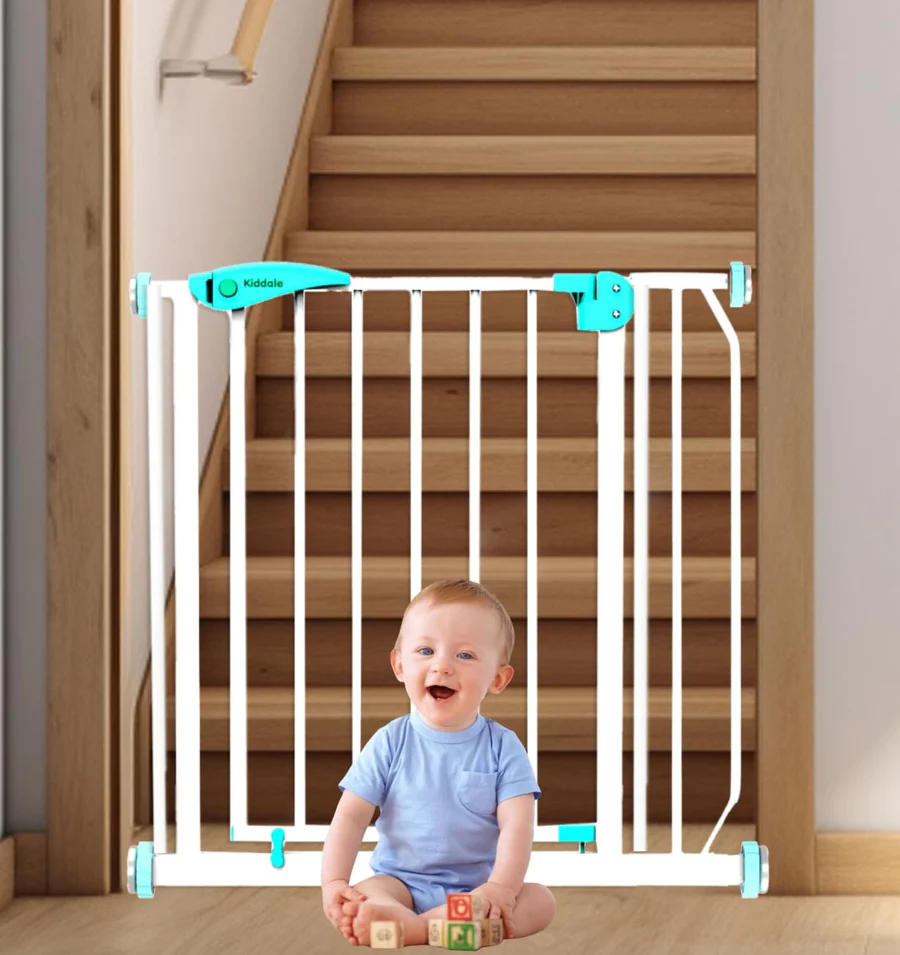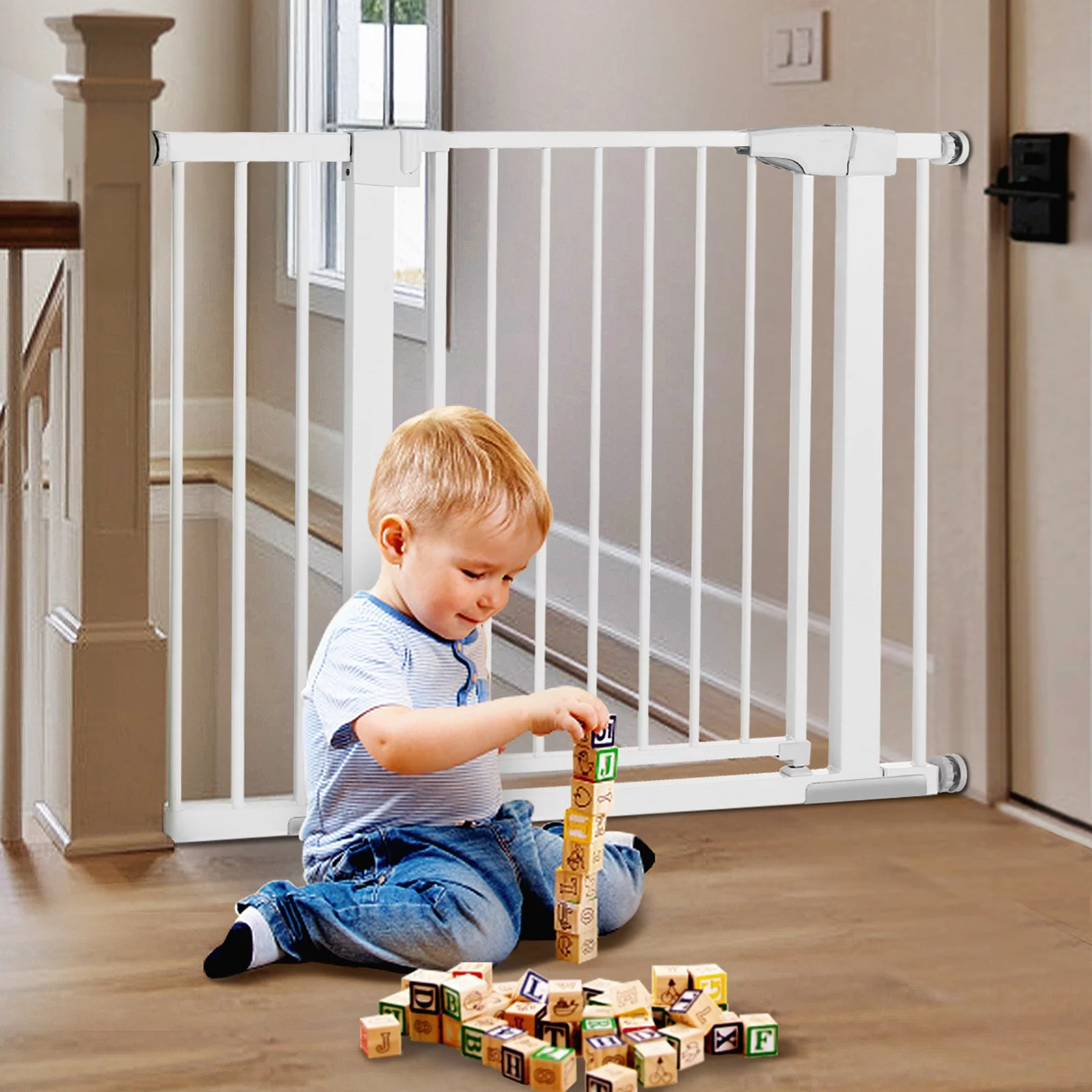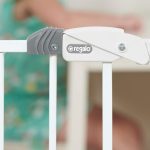Ensuring the safety of children as they grow and explore their environments is a top priority for parents and caregivers. One critical aspect of baby-proofing a home is selecting the proper safety gate. With various models and features available, choosing the right gate can be overwhelming. This article provides insight into the essential features of safety gates and offers practical tips to aid in making an informed decision that meets your family’s safety needs.
Understanding Safety Gate Types
Hardware-Mounted Gates for Maximum Security
Hardware-mounted gates, which are screwed directly into the wall or door frame, offer the highest level of security and stability. They are ideal for high-risk areas such as the top of a staircase where a gate giving way can result in serious injury. Although they require a more permanent installation, they are less likely to be dislodged by an adventurous child or curious pet.
Pressure-Mounted Gates for Flexible Placement
Pressure-mounted gates rely on tension to stay in place, which means they do not need screws and are easy to move and adjust. They are best suited for locations where falls are not a concern, such as between two rooms or at the bottom of stairs. These gates are convenient for renters or anyone who prefers not to drill into walls. However, one must regularly check the tension to ensure the gate remains secure.

Key Features to Consider
Gate Height and the Growth of Your Child
When picking out a safety gate, consider the height. The rule of thumb is that a gate should be at least three-quarters of your child’s height. As children grow, they become more adept at climbing, so a taller gate can be more effective in preventing this. Some gates also come with extensions to increase their height, an option that can prolong the gate’s usefulness as your child grows.
Locking Mechanisms for Extra Security
The locking mechanism of a safety gate is another crucial factor. Test different gates to see how the locks operate and to find one that is challenging enough to deter children but still user-friendly for adults. Look for gates with dual locking features or alarms that sound if the gate remains open, as they add an additional layer of security and peace of mind.

Making a Safe and Practical Choice
Assessing the Space and Adjustability
Prior to purchasing a gate, measure the space where you plan to use it. Many safety gates are adjustable to fit a range of doorway widths or hallway sizes. However, if you have an unusually wide or narrow space, you may need to look for specialty gates designed for those measurements. Some models have expansion kits, so consider the potential need for extra width in the future.
Evaluating Ease of Installation and Use
Ease of installation and daily use should also weigh into your decision. If you plan to move the gate frequently between different areas in your home, look for a pressure-mounted design that can be easily relocated and adjusted. Conversely, if the gate will live permanently in one place, a hardware-mounted option might be the best choice. Remember to ensure that the installation process isn’t so complex it deters you from using the gate every day.

Maintaining Safety Through Proper Usage
Regular Maintenance Checks
Like any other piece of safety equipment, it is essential to perform regular checks on your safety gate. Regardless of type, inspect the gate periodically to ensure it’s in good working order. Check for structural integrity, tighten any loose parts, and make sure the locking mechanism functions correctly. Gates that fail these simple tests could be hazardous and require prompt replacement or repair.
Educating Everyone on Gate Safety
Finally, make sure that everyone in the household understands how to properly operate the safety gate. This education includes not only the locking and unlocking mechanism but also the importance of always securing the gate after passing through. By making gate safety a collective responsibility, you help create a safer environment for children to play and explore.

Prioritizing Child Safety with User-Friendly Features
Choosing Gates with Visibility
When selecting a safety gate, visibility can be a significant convenience. Opt for gates with slats or a mesh that you can see through, ensuring you can monitor your child even when the gate is closed. This lets you keep an eye on what’s happening on the other side, providing an extra layer of supervision without needing to open the gate frequently.
Considering Materials and Construction
The material of the safety gate is equally important. Metal gates typically offer more durability and strength compared to their wooden or plastic counterparts. They are often more suited for energetic kids who might lean, push, or shake the gate. However, wooden gates may better complement your home décor and offer a natural, warm aesthetic. Plastic gates can be lighter and more portable, useful for travel or temporary setups.
Selecting a Gate that Grows with Your Child
Some safety gates come with features that accommodate your growing child. Convertible gates that double as play yards can be an excellent investment, offering multi-use capabilities. These adaptable models can often be reconfigured to fit larger or irregularly shaped areas, making them practical long-term solutions. Look for gates with panels that you can add or remove as needed to suit your changing safety needs.

Creating a Cohesive Safety Strategy at Home
Harmonizing Safety with Daily Life
When integrating a safety gate into your home, it’s important to ensure it harmonizes with your daily routines. Gates that feature walk-through doors allow for smooth transit for adults while staying secure for kids. Ensure the door’s operation is quick and quiet to avoid any hassle or disturbance, especially during naps or late-night check-ins.
Ensuring Portability and Storage
If you need the flexibility to remove the gate at times, consider how easily you can store it away. Lightweight, collapsible gates can be an ideal option if you need to clear the space for cleaning or entertaining. Portability is also key if you intend to use the gate in different locations within your home or while visiting family and friends.
In conclusion, selecting the right safety gate requires careful consideration of the different types available, the features they offer, and their suitability for your home and family. By assessing your needs, measuring your space, checking for key security features, and ensuring ease of use, you can make a wise choice that effectively balances safety, convenience, and flexibility. Remember that ongoing maintenance and household education are critical in maximizing the safety benefits that gates provide, helping parents and caregivers protect their little ones from common household hazards.


